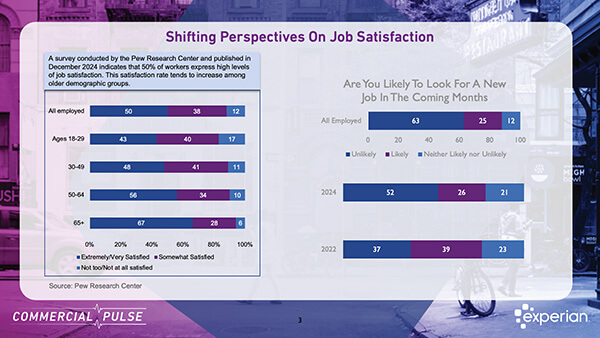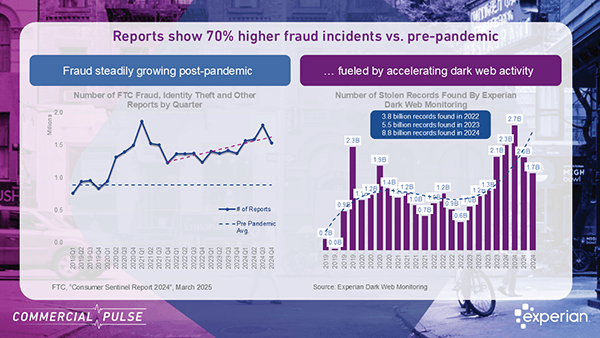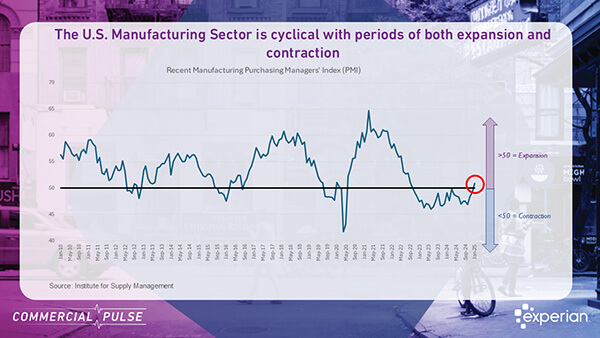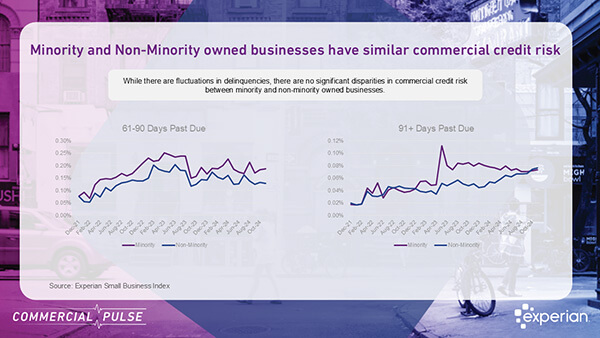Report
Published May 25, 2023
Commercial Commercial InsightsQ1 GDP grew by 1.1% annualized, following a 2.6% gain in Q4 2022. However, recent data's accuracy is affected by weather-induced consumer spending and unusual seasonal adjustments. Notably, Q1 GDP doesn't reflect the impact of tightened lending standards yet. The core of the economy, measured by real final sales to domestic purchasers, rose by a solid 2.9% annualized, driven by strong consumer spending concentrated in early Q1 and aided by significant cost-of-living payments. Inventory reduction subtracted 2.3ppts from Q1 GDP growth, and this trend is expected to persist as businesses draw from existing stockpiles to meet demand. The Oxford Economics US Business Cycle Indicator declined for two consecutive months, indicating weak Q1 performance. The indicator suggests feeble Q2 growth and a possible H2 2023 recession.
Download the report
View now Video
Video
Labor Market Disruption – Why Are Satisfied Workers Leaving?
𝗧𝗵𝗲 𝗹𝗮𝘁𝗲𝘀𝘁 𝗘𝘅𝗽𝗲𝗿𝗶𝗮𝗻 𝗖𝗼𝗺𝗺𝗲𝗿𝗰𝗶𝗮𝗹 𝗣𝘂𝗹𝘀𝗲 𝗥𝗲𝗽𝗼𝗿𝘁 𝗶𝘀 𝗼𝘂𝘁!
While job satisfaction remains high ⭐, 𝟭 𝗶𝗻 𝟰 𝗲𝗺𝗽𝗹𝗼𝘆𝗲𝗲𝘀 𝗮𝗿𝗲 𝗰𝗼𝗻𝘀𝗶𝗱𝗲𝗿𝗶𝗻𝗴 𝗮 𝗷𝗼𝗯 𝗰𝗵𝗮𝗻𝗴𝗲 ⚠️.
Also, union membership is at a historic low—𝗷𝘂𝘀𝘁 𝟵.𝟵%—but public support is rising, especially among younger workers. These dynamics are reshaping employer-employee relationships, with big implications for small businesses.
𝗢𝘁𝗵𝗲𝗿 𝗸𝗲𝘆 𝘁𝗮𝗸𝗲𝗮𝘄𝗮𝘆𝘀:
✔️ Inflation cooled to 2.8%
✔️ 228K jobs added in March
✔️ Unemployment rose to 4.2%
✔️ Consumer sentiment dipped to its lowest since 2022
Small businesses continue to show resilience, with optimism inching up and business starts outpacing pre-pandemic levels.
Check out the full report to see how these trends could impact your strategy!
 Video
Video
A Growing Small Business Financial Fraud Problem
This week’s Commercial Pulse Report from Experian reveals critical shifts in the economy for small businesses. Inflation eased slightly to 2.8%, and the Small Business Index ticked up to 41.5—signs of stabilization. But rising financial fraud remains a major concern. Also:
🔒 70% increase in fraud since the pandemic
🧠 $40B in projected losses from AI-driven scams by 2027
📊 46% of SMB loan applications showed signs of first-party fraud
Lenders are responding with AI-powered analytics and cross-industry collaboration to stay ahead of these threats.
Check out the full report to see how these trends could impact your strategy!
 Video
Video
Small Businesses Driving a Manufacturing Comeback
In this week's video we touch on current small business macroeconomic conditions as well as share insights on the manufacturing
The U.S. manufacturing sector has been in a period of contraction for more than two years, but recent data suggests that a turning point may be on the horizon. The Purchasing Managers’ Index (PMI) reached 50.9 in January, breaking past the critical 50-point threshold for the first time in 26 months. This indicates that manufacturing activity is shifting from contraction to expansion, a positive sign for small businesses that have been a major driver of growth in the sector.
Check out the full report to see how these trends could impact your strategy!
Subscribe to Commercial Pulse Report
 Video
Video
A $2 trillion opportunity with minority-owned small businesses
In this episode, we discuss the growing economic crosswinds affecting small businesses, recent employment trends, consumer spending patterns, and the impressive growth of minority-owned businesses in the U.S. We highlight the challenges and opportunities these businesses face, particularly in accessing needed capital.
📌 41% of new commercial accounts are minority-owned, yet access to capital remains a barrier.
📌 44% of minority-owned businesses are less than six years old, showing strong entrepreneurial momentum.
📌 Industries like retail, construction, and healthcare are fueling this expansion.
For lenders, this represents an untapped market and a business opportunity with high growth potential.
Check out the full report to see how these trends could impact your strategy!